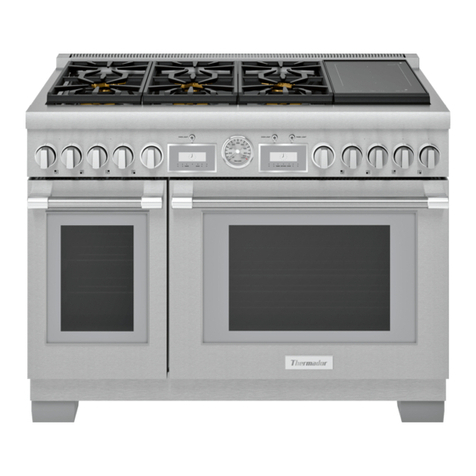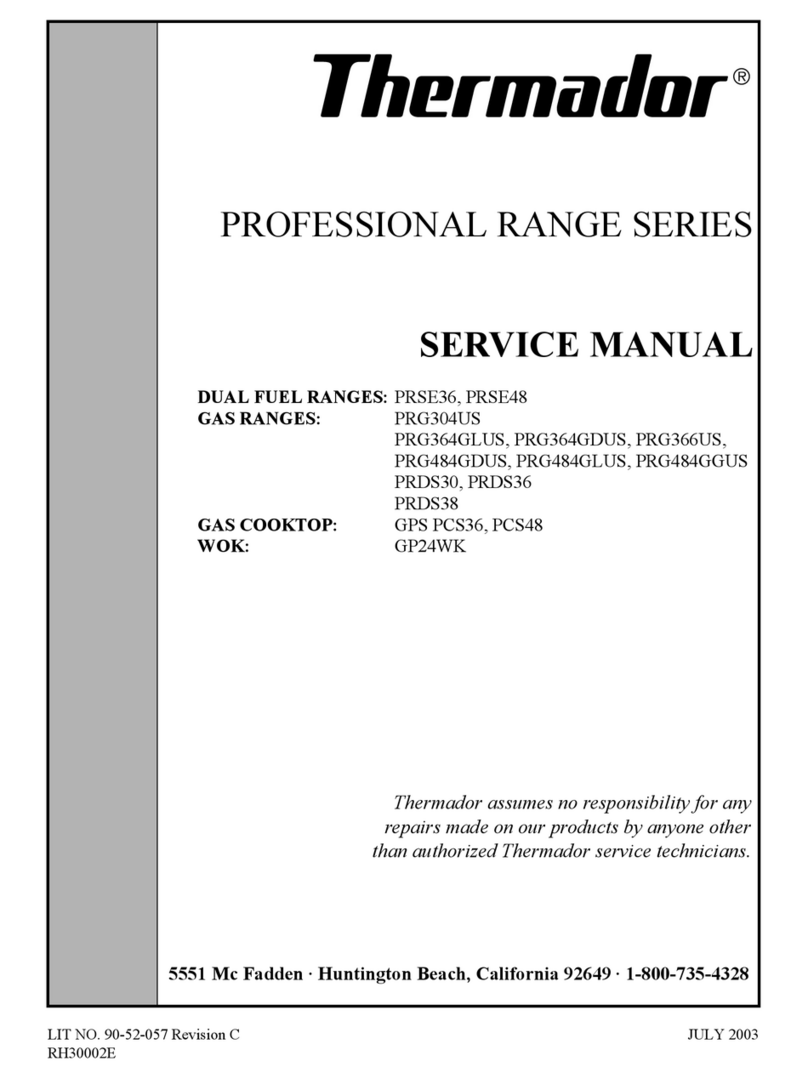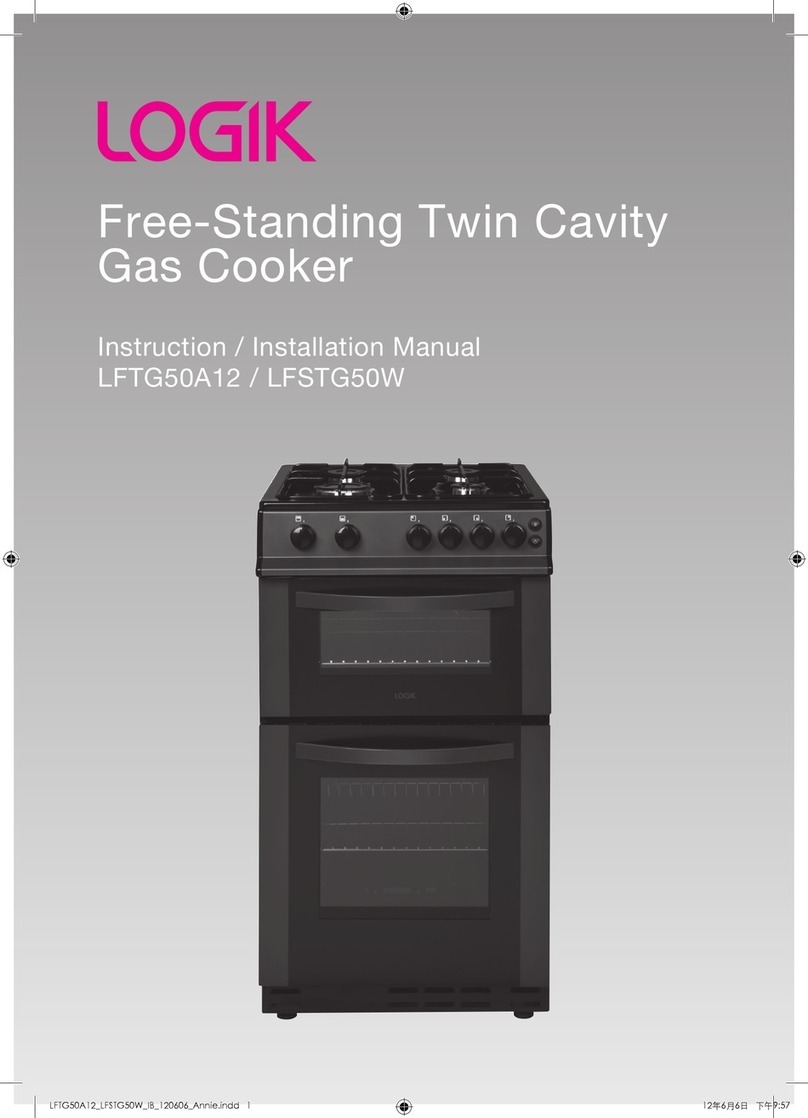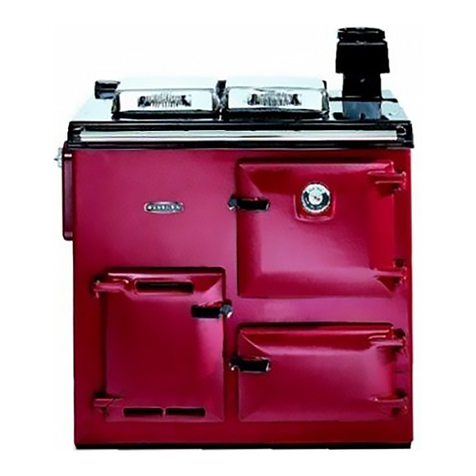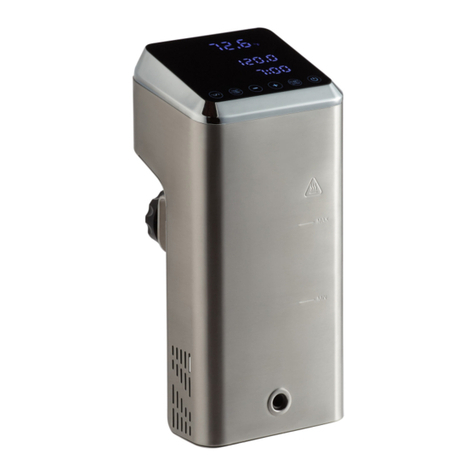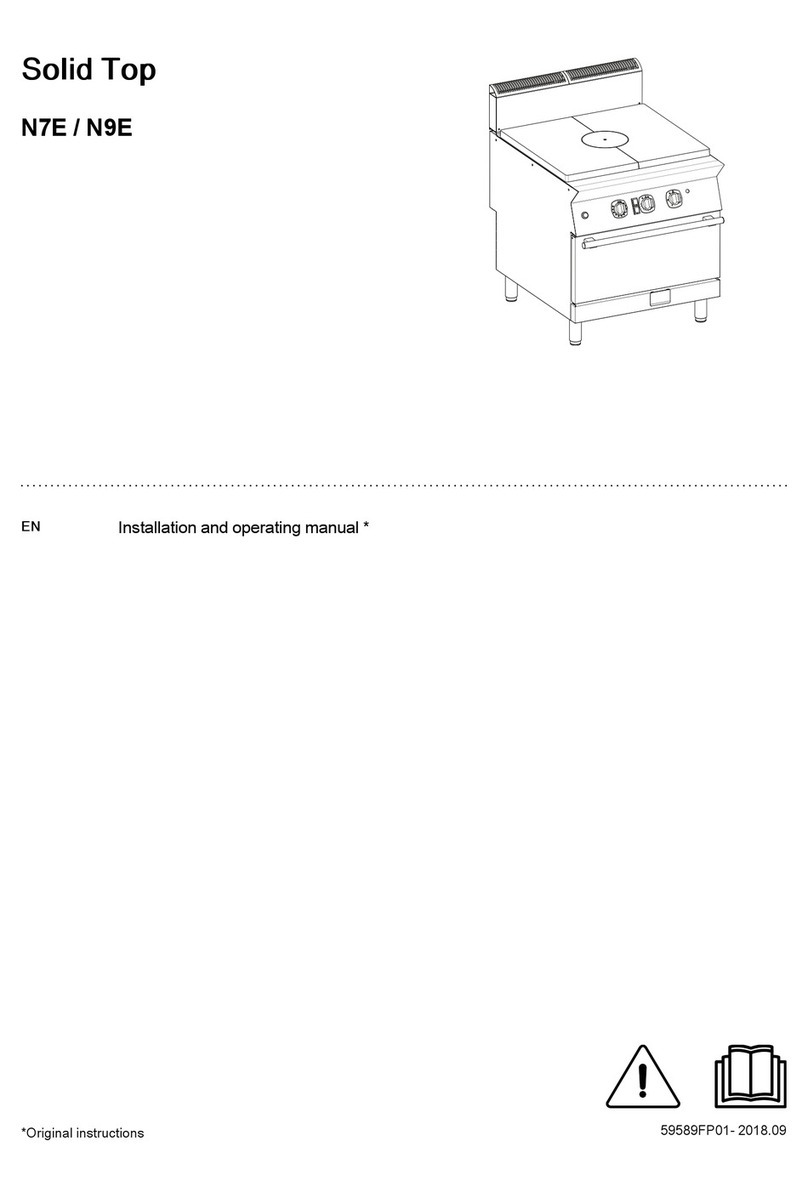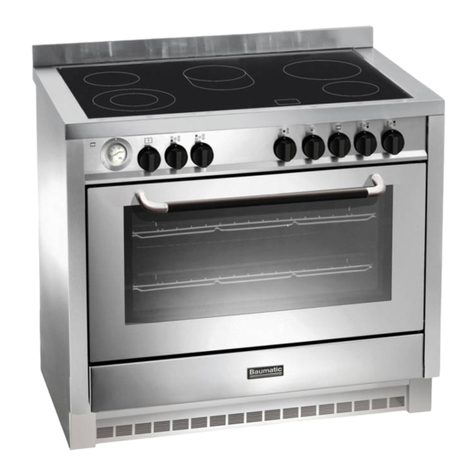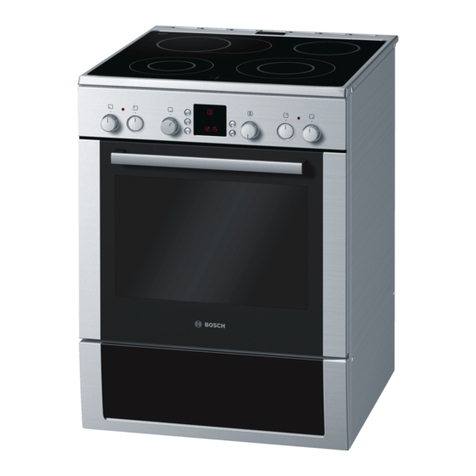
Service Manual for the Thermador Pro Grand Next Generation 48-Inch Natural Gas and LP Gas Ranges, Models: PRG486JDG/01, PRL486JDG/01
58300000159722_ARA_EN_DPage 2 of 92
TABLE OF CONTENTS
1General .................................................................................................... 5
1.1 Technical Documents to Read Prior to Servicing.......................................... 5
1.2 Data Rating Plate.......................................................................................... 5
1.3 Wiring Diagram ............................................................................................. 6
1.4 Recommended Tools and Supplies .............................................................. 6
1.5 Important Safety Information......................................................................... 7
1.5.1 Safety Symbols Used In This Manual.................................................... 7
1.5.2 Safety Precautions to Know Prior to Servicing....................................... 7
2Operation and Controls ....................................................................... 10
2.1 Knobs and Controls..................................................................................... 10
2.1.1 Standard Burner Knob......................................................................... 10
2.1.2 ExtraLow (XLO) and ExtraHi (XHI) Burner Knobs................................ 10
2.1.3 Griddle / Grill Control Knob.................................................................. 10
2.1.4 Temperature / Function Selector Knob for Large Oven ....................... 10
2.1.5 Temperature / Function Selector Knob for Small Oven........................ 11
2.1.6 Oven Light and Panel Light Switches .................................................. 11
2.2 LED Indicators............................................................................................. 11
2.3 Automatic Re-Ignition.................................................................................. 11
2.4 Operation during a Power Outage............................................................... 11
2.5 Rangetop Burner Assembly and Maintop Components .............................. 11
3Testing, Adjusting, and Troubleshooting Rangetop Burners and
Ignition................................................................................................... 12
3.1 Before Testing............................................................................................. 12
3.2 Rangetop Burner Characteristics................................................................ 12
3.3 Rangetop Flame Characteristics................................................................. 13
3.4 Testing Ignition for Burners......................................................................... 14
3.4.1 Time to Ignite....................................................................................... 14
3.4.2 Testing Ignition for Standard Burner Settings (HI, MEDIUM, SIM)....... 14
3.4.3 Testing Ignition for XLO Burner Settings.............................................. 14
3.4.4 Testing Broil Burner Ignition................................................................. 14
3.4.5 Testing Bake Burner Ignition................................................................ 14
3.5 Adjusting Bake Burner Flame with the Air Shutter...................................... 14
3.6 Adjusting Rangetop Burner Valves Manually.............................................. 15
3.6.1 Special Tools Needed.......................................................................... 15
3.6.2 Adjusting the Bypass Screws............................................................... 16
3.7 Troubleshooting Burners, Flame, and Ignition ............................................ 16
3.7.1 Burner and Flame Diagnostics for Rangetop Burners.......................... 16
3.7.2 Ignition Diagnostics for Rangetop Burners........................................... 16
4Diagnosing Hot Surface Igniters, Griddle / Grill Element, Oven
Lights, Temp Sensors.......................................................................... 18
4.1 HSI and Element Diagnostics ..................................................................... 18
4.1.1 Cycle/Circuit Specification.................................................................... 18
4.1.2 Safety Practices for HSI and Element Diagnostics .............................. 18
4.1.3 HSI and Element Diagnostic Tips ........................................................ 18
4.2 Oven Light Diagnostics............................................................................... 18
4.3 Oven Temperature Sensor Diagnostics...................................................... 20
4.3.1 Resistance and Temperature Values for the Oven Temperature Sensor
20
5Fault Messages..................................................................................... 21
6Service and Repair ............................................................................... 22
6.1 Preparing the Range for Servicing.............................................................. 22
6.2 Component Removal Videos ...................................................................... 22
6.3 Accessing Components under the Maintop................................................. 22
6.3.1 Removing Knobs, Grates, Rangetop Burner Assemblies, Maintops,
Heat Shields, Burner Support Rails ..................................................... 22
